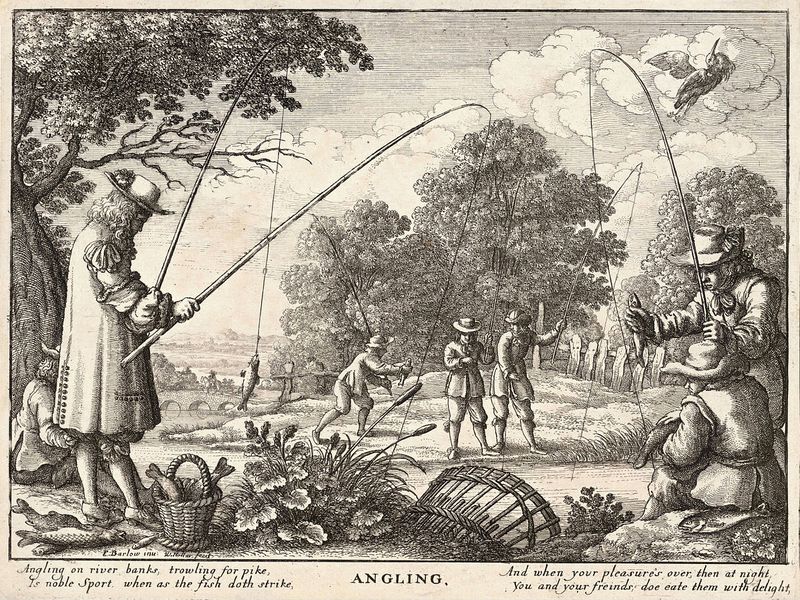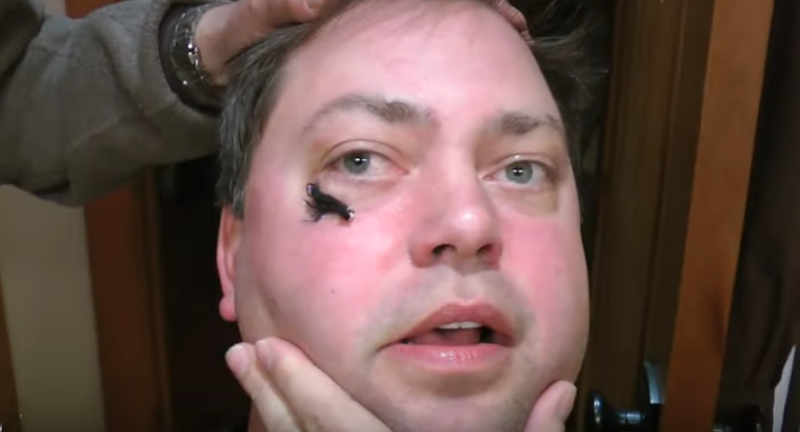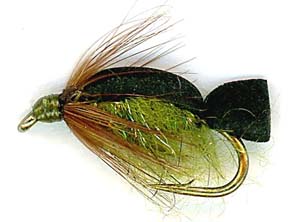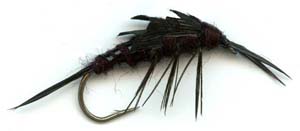
The sport of angling (“angle” is an old work for “hook”) was a popular 1600s pastime that had a number of guides written about it. (Wikimedia Commons)
Living in New Zealand for four months in a camper and being guided half of the time (North Island) by the country’s most famous guide and fly tyer, Huey McDowell, allowed me to get my graduate degree in trout fishing. However, I only a high school diploma in fly tying. Huey could tie a size 16 in the field without a vice, so he was not too tolerant of my learning curve at his cottage just outside Rotorua.
In our bi-annual exchanges, before he passed two years ago, his salutation was always: “Dear 10 Thumbs.
About fishing hooks – PART I: Tying one on
By Skip Clement
[dropcap]F[/dropcap]ishing hooks are a conundrum for the non-pro tyer because there are so many sizes, styles, and shapes. It’s overwhelming to think you would need to know all the styles, sizes, shapes and numeric identifiers to be especially good at tying. Well, you don’t, so relax.
Fly hooks are the mold of a fly’s total ‘body’ length and a hook influences what the patterns are going to used for, as well as its limitations. You wouldn’t, for example, tie a tarpon fly on a #16 or a nymph on a 6/0.
To me, fly fishing hooks break down to types with sub-categories. The latter particularly so for trout pattern tyers. Tiemco for example, has Streamer Hook, Standard Wet Fly Hook, BL Barbless Standard Wet Fly Hook, Nymph & Wet Fly Hook and on and on.
Hook numbering systems
Fly fishing hooks are numbered, as you know, 1 to 28 with even numbers starting at #2. These numbers, obviously, designate the size of the hook with the largest 1 and smallest 28. These are made out of forged bronze.

Sunglasses for your own good. Screenshot.
Saltwater hooks
Larger saltwater hooks (SWH) and streamer hooks are numbered 1/0, 2/0, and so on with the reverse of size designations, 1-28 equals larger to smaller and 10/0 is larger than a 1/0.
SWH are heavy duty and corrosion resistant. Primarily, saltwater patterns are bait imitations. Saltwater hooks are also available in those designations, like 10, 8, 6, etc. But for saltwater, they’ll be corrosion resistant.
A separate number, used by a manufacturer, will designate the style of the hook. No two manufacturers styles are the same. Many tyers stay with one hook maker because they can master the inventory designations they keep – a comfort zone with sizes and style numbers all filed in the silky folds.
The only assist you get from the manufacturers is a worthy one, they are (generally) package with a label indicating what they are primarily used for saltwater, pupa, dry fly, streamer, etc.
Dry fly hooks
These type hooks are used for soft landing fly casts and are imitations of an endless array of ‘bugs’ that use the river/stream/lake as both matings, birthing, emerging and dying. Each stages performance dominated by the time of year, water temperature and weather. Not all the same ‘bugs’ are found in even close to regional waters. Some ‘bugs’ are even diverse in a single river like the Chattahoochee in Georgia.
Nymph hooks
Nymph hooks probably represent the greatest number of styles, lengths, and shapes. The hooks are for patterns like a stonefly, caddis pupa, etc. Some patterns are tied eye down, another eye up, but straight shank hooks are used a majority of the time tying of nymphs.
Streamer hooks
Streamer hooks are baitfish patterns and attractor patterns like the Wooly Bugger and Clouser Minnow. The latter patterns don’t look like anything that swims but draw fire in the water. Streamer hooks are the industrial strength (bronze or steel) and fished either eye down or straight.
Barbed hooks vs. naked hooks
Barbless hooks pull out of ‘your’ cheek easily and painlessly, barbed insist on pain and take meat on removal. Barbless hooks permit many times faster and safer fish release, which lowers mortality dramatically. A barbless hook broken off will more readily fall out of a fish’s mouth versus a barbed hook.
Flattening a hook with a barb takes time, and occasionally ruins the fly (hook). A fish broken off with a barbed hook that cannot be shaken off has to be rusted off; time waits for no fish. Unable to feed invites predation and starvation.
The reasons for barbed are we all learned on them, they’re much more available, less likely to lose a fish, and you don’t have to crimp the barb.
Your call, of course, but give barbless a shot and test your skill. The trick, no slack.



